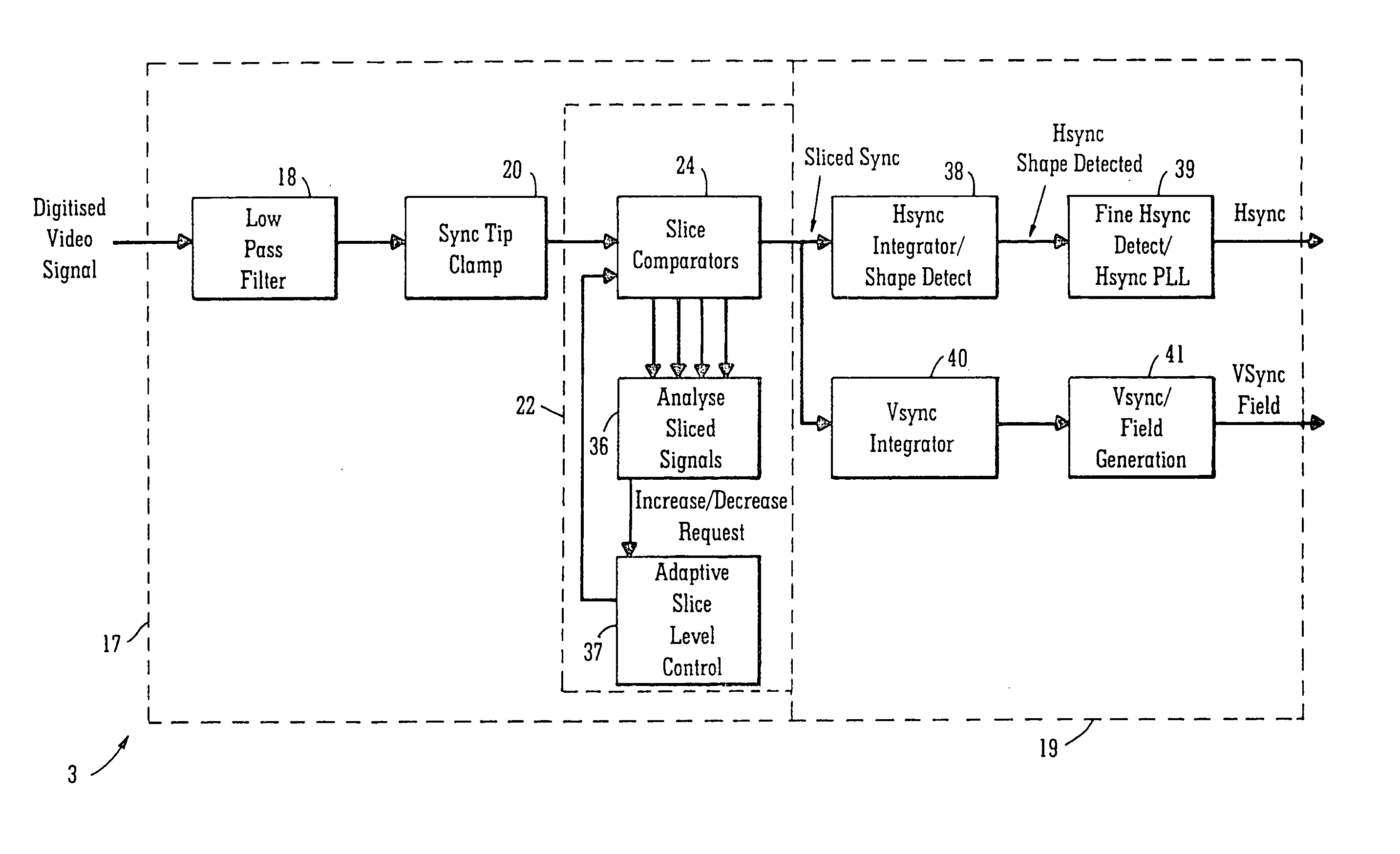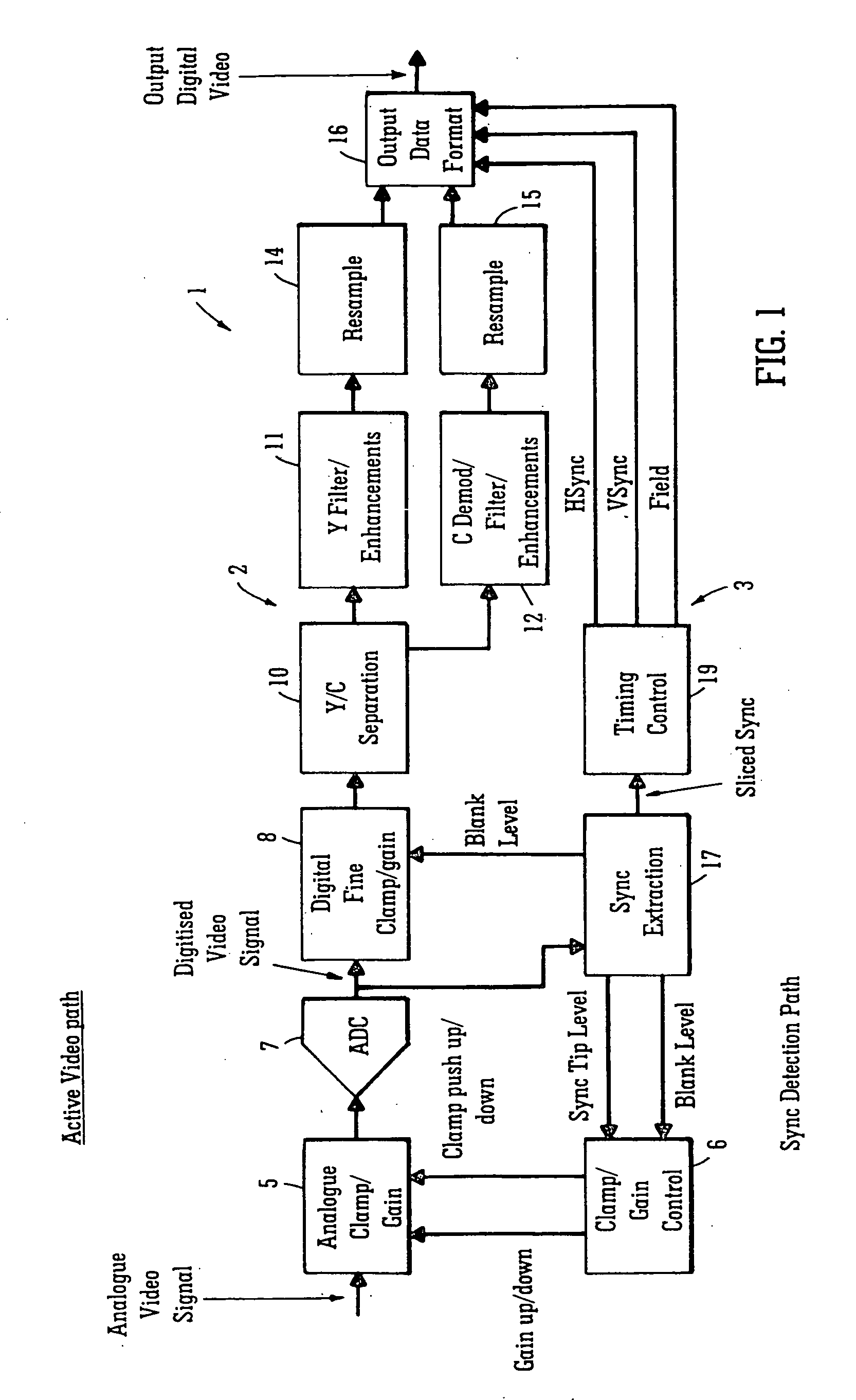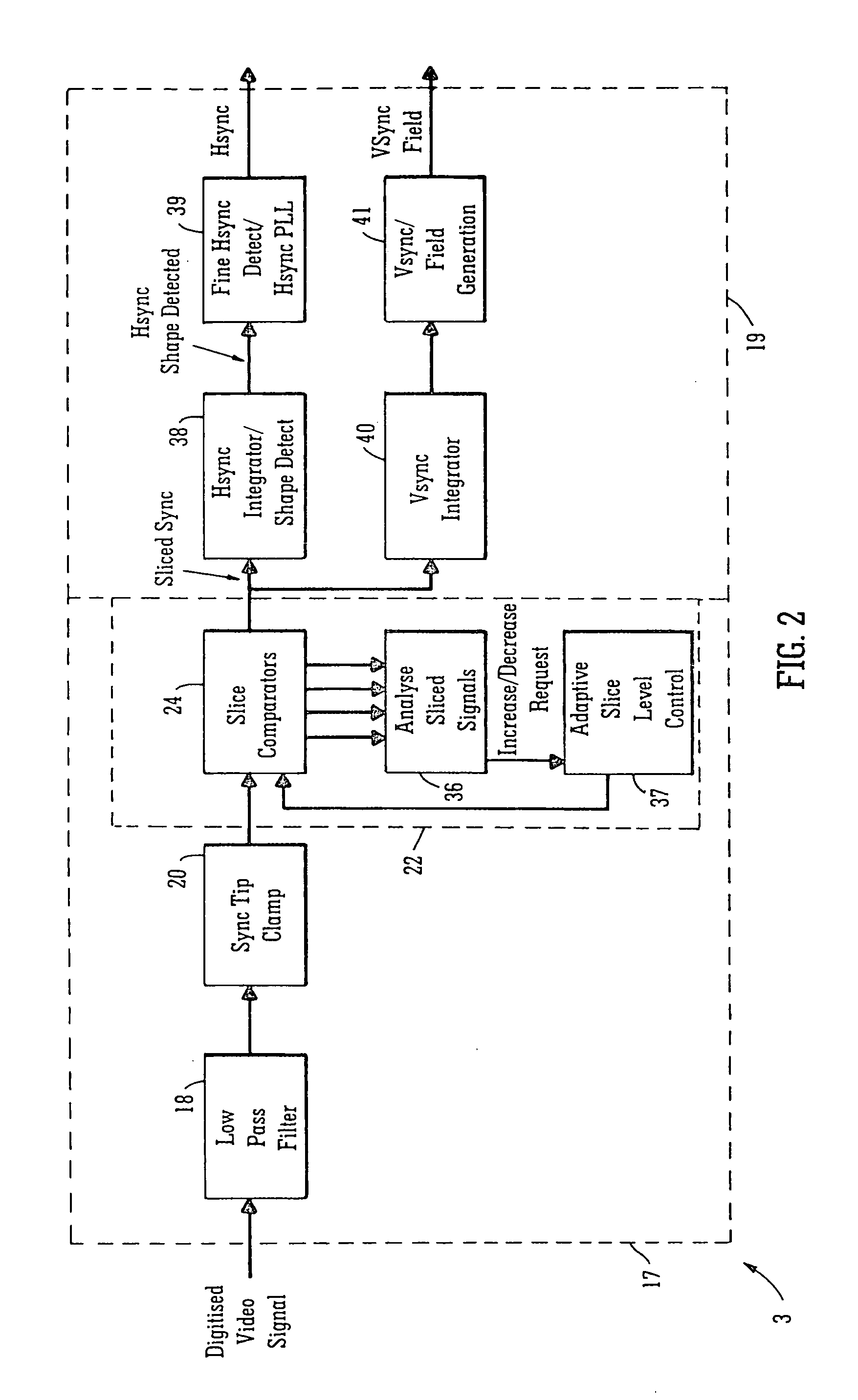Method and a circuit for deriving a synchronisation signal from a video signal
a synchronisation signal and video signal technology, applied in the direction of signal generators with optical-mechanical scanning, picture reproducers using projection devices, television systems, etc., can solve the problems of masking horizontal sync signals, video signals may suffer, and noise levels, so as to achieve accurate determination of the location of horizontal sync signals and make relatively rapid effects
- Summary
- Abstract
- Description
- Claims
- Application Information
AI Technical Summary
Benefits of technology
Problems solved by technology
Method used
Image
Examples
Embodiment Construction
[0090] Referring to the drawings, and initially to FIGS. 1 to 4, there is illustrated a decoder according to the invention, indicated generally by the reference numeral 1, for decoding a video signal. The decoder 1 comprises an active signal processing and decoding circuit indicated generally by the reference numeral 2, and a synchronisation pulse signal recovery circuit also according to the invention indicated generally by the reference numeral 3 for implementing a method also according to the invention for deriving a synchronisation signal from the video signal, from which a horizontal sync signal of the video signal is recovered, and in turn a vertical sync signal and a field signal are also recovered. The sync signal recovery circuit 3 is provided in parallel with the active signal processing and decoding circuit 2, so that recovery of the horizontal and vertical sync signals and the field signal is carried out by the sync signal recovery circuit 3 effectively on the fly and si...
PUM
 Login to View More
Login to View More Abstract
Description
Claims
Application Information
 Login to View More
Login to View More - R&D
- Intellectual Property
- Life Sciences
- Materials
- Tech Scout
- Unparalleled Data Quality
- Higher Quality Content
- 60% Fewer Hallucinations
Browse by: Latest US Patents, China's latest patents, Technical Efficacy Thesaurus, Application Domain, Technology Topic, Popular Technical Reports.
© 2025 PatSnap. All rights reserved.Legal|Privacy policy|Modern Slavery Act Transparency Statement|Sitemap|About US| Contact US: help@patsnap.com



